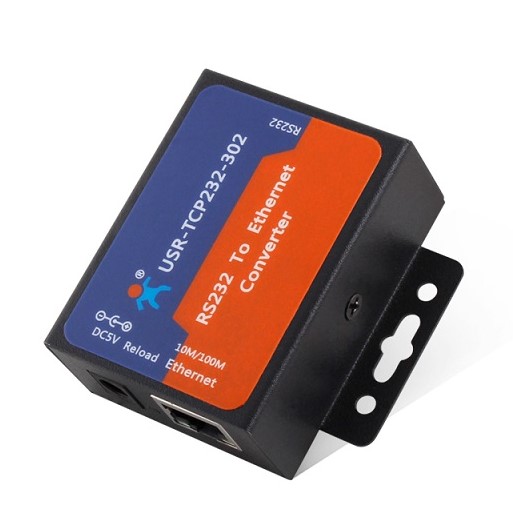RS232 to Ethernet Support for PDM II
Scope
This document describes using a 3rd party RS232 to Ethernet adapter to interface with the Program Delay Manager II (PDM II) delay.
Overview
As facilities become increasingly IP-based, Telos has seen a shift in serial communications from hardwired serial ports to routable IP-based protocols. As this network-centric trend accelerates, a design decision was made during PDM II's development to omit the original PDM's legacy 9-pin serial port. While that port is gone, every software function that could be done on an original PDM with its old serial port can still be done with the PDM II using network connections and our serial command language.
We recognize some customers may still be using hardware serial ports for connectivity and might have challenges replacing an original PDM with a PDM II. To address this occasional need, we looked into third-party devices which provide a hardware serial port that can connect over the network to a PDM II. We have identified an inexpensive unit (~$25), well-supported, simple to use, and likely to continue being available. Our engineers have tested this with PDM II and can recommend its use for those needing it. This document describes the unit and its configuration.
USR-TCP232-302 RS232 to Ethernet Converter

English product page: https://www.pusr.com/products/1-port-rs232-to-ethernet-converters-usr-tcp232-302.html
English store page: https://shop.usriot.com/1-port-rs232-to-ethernet-converters-usr-tcp232-302.html
Manual: https://www.pusr.com/support/downloads/user-manual-usr-tcp232-302-user-manual.html
This is a very simple and well-thought-out product with a brief but comprehensive manual. The unit has a small metal chassis with a 5v DC power port, Ethernet and serial jacks, and a Reset button. Configuration is done over a simple web UI with only five pages, only two of which must be configured to get everything working.
Telos engineers got this unit up and running in about a half hour, and it works fine for connecting to the PDM II.
Here is a quick description of how to configure this unit.
Reset to factory defaults
To make sure that the unit is at factory defaults:
- Power unit up
- Press and hold the reset button (between power and ethernet jacks)
- After 5 seconds, release button
Configure the unit's network
Plug the unit into Ethernet. The unit defaults to a static IP address of 192.168.0.7, with username "admin" and password "admin." You'll need to plug it into a network that includes that address and then access the web UI or use the Windows-based configuration software. See the manual for more details.
Once you have configuration access to the unit, in the "Local IP Config" section, change the IP type and configuration to your preference, probably using a static IP address.
Reboot, and then get web UI access at the new address.
Configure the unit's security
If you are concerned about network security, change the username and password.
Configure the unit's serial port
Configure the serial port as follows:
- Set to the desired baud rate and data format
- Set "Remote Server Addr" to the PDM II's IP address
- Set "Remote Port Number" to the PDM II port you wish to access (e.g., port 5443 to control the PDM II)
- Set "Work Mode" to "TCP Client"
- Save and reboot.
Confirm connection
If everything is configured properly, the unit will automatically make a network connection to your PDM II, and you'll see the PDM II's IP address in the "Remote IP/TX/RX-1" line of the Status page:
If instead, you see the address "0.0.0.0", then the unit has been unable to connect:
If there are problems, here are some things to check:
- The USR-TCP232 has the correct IP address and port for the PDM II
- The PDM II's configuration page shows the network port is enabled
- The USR-TCP232 can access the PDM across the network (e.g. there isn't a firewall between the two)
For guidance on PDM II's Serial Command Language, follow this link to the PDM II manual.
Let us know how we can help
If you have further questions on this topic or have ideas about improving this document please contact us
